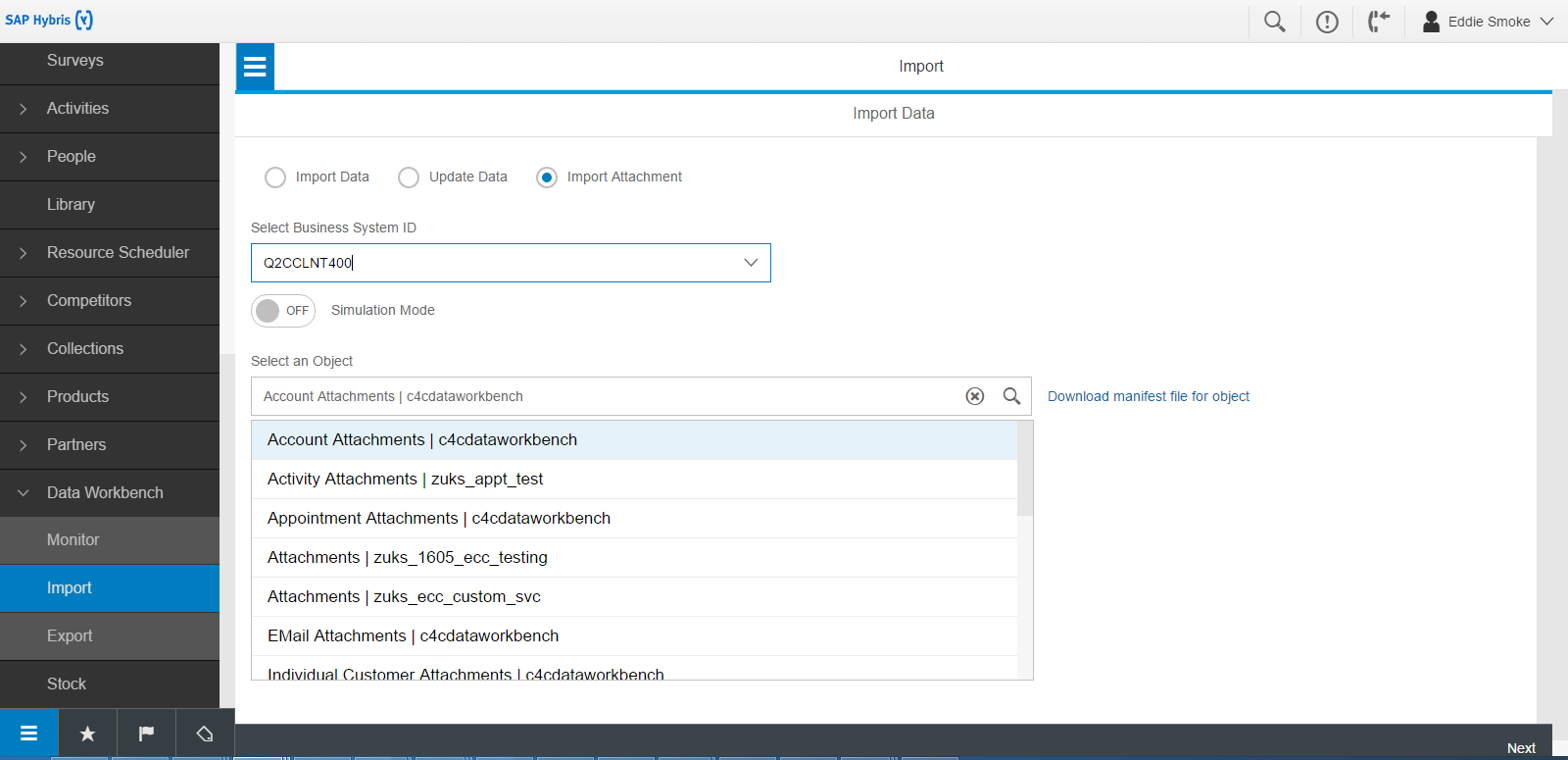
- SAP Community
- Products and Technology
- CRM and Customer Experience
- CRM and CX Blogs by SAP
- A look into the new Data Workbench application
- Subscribe to RSS Feed
- Mark as New
- Mark as Read
- Bookmark
- Subscribe
- Printer Friendly Page
- Report Inappropriate Content
Overview
Data migration is a key activity when adopting a cloud software. We recognize that there can be multiple sources where the data is residing but ultimately whatever the source is, the data migration tool within the application needs to be easy, intuitive and have high performance. This is why we re-designed the entire data migration experience to bring in Data Workbench, a tool that was built from the ground up and is a highly scalable and efficient data migration tool purpose built for SAP Hybris Cloud for Customer.
Use-Cases
Data Workbench can be used for any data import activity from SAP on-premise/Cloud or 3rd party on-premise/Cloud applications. Data can be imported using a CSV format. To make it easier for the consumer, Data Workbench offers pre-defined templates to eliminate mapping effort or you have the flexibility to choose any CSV format and manually map it to the C4C application fields.

Key Capabilities
1. Simple and Secure
Data Workbench offers a simple user interface for business administrators to securely connect to the application for data migration. Using Data workbench you have access to the complete range of CRUD (create, read, update, delete) operations that have been organized around Import, Export & Monitor on the user interface. The tool is also available for use in the latest Responsive User interface technology of Cloud for Customer.

2. Comprehensive Coverage
Data migration can be implemented for most of the underlying standard business objects from core master data to transactions in SAP Hybris Cloud for Customer platform. In addition to standard business objects the tool also supports attachments and custom business objects that were created using the Key User Tool (KUT) or platform development infrastructure (PDI) and extension fields that were created using KUT..

3. Intuitive and Intelligent Mapping
Data workbenchuses the best-in-class data mapper capability offered from the SAP HANA Cloud Platform to map and execute data transformations from the CSV source to the Cloud for Customer application destination. The data mapper is intelligent, visual and can auto-suggest fields if they have the same semantic and syntax.

4. Efficient and flexible
Templates are offered to improve efficiency on repetitive data loading activities. For example, if the data records are refreshed every month, you can save your mapping work as a template for future use and don’t need to start from scratch. Templates are also a great way to standardize the fields that are imported across your organization. For example each region can use the same template to ensure data consistency. Data workbench also offers flexibility in defining their own templates and code list mapping.

5. High performance, scalable and simulation driven architecture
It is recommended to import a maximum of 50,000 records for each run. This is suggested for optimal performance throughput and also in order to fix validation issues that may arise during import. This is where the simulation capability comes in and is a great option that allows administrators to view the records in preview mode before they have been physically imported into the SAP HANA database. During the simulation mode, the user can manually adjust errors if they do arise during import.

For more detailed information on data workbench, please refer to the guide published on SAP Service Marketplace.
- SAP Managed Tags:
- SAP Cloud for Customer add-ins,
- SAP Customer Relationship Management
You must be a registered user to add a comment. If you've already registered, sign in. Otherwise, register and sign in.
-
Business Trends
270 -
Business Trends
10 -
chitchat
1 -
customerexperience
1 -
Event Information
256 -
Event Information
17 -
Expert Insights
30 -
Expert Insights
48 -
Life at SAP
133 -
Life at SAP
1 -
Product Updates
666 -
Product Updates
24 -
SAP HANA Service
1 -
SAPHANACloud
1 -
SAPHANAService
1 -
Technology Updates
453 -
Technology Updates
15
- Utility Product Integration Layer (UPIL) in S/4HANA Utilities for Customer Engagement – Part 1 in CRM and CX Blogs by Members
- Delete & Rename Contract Account Name from SAP Cloud for Customer (C4C) in CRM and CX Blogs by Members
- Is it possible we put a Water Mark on the data we exported from the C4C Data Workbench? in CRM and CX Questions
- SAP Customer Data Cloud Integration with Commerce Cloud and Composable Storefront in CRM and CX Blogs by SAP
- CRM Basic Technical Info for ABAPers in CRM and CX Blogs by Members
| User | Count |
|---|---|
| 4 | |
| 3 | |
| 2 | |
| 2 | |
| 2 | |
| 1 | |
| 1 | |
| 1 | |
| 1 | |
| 1 |